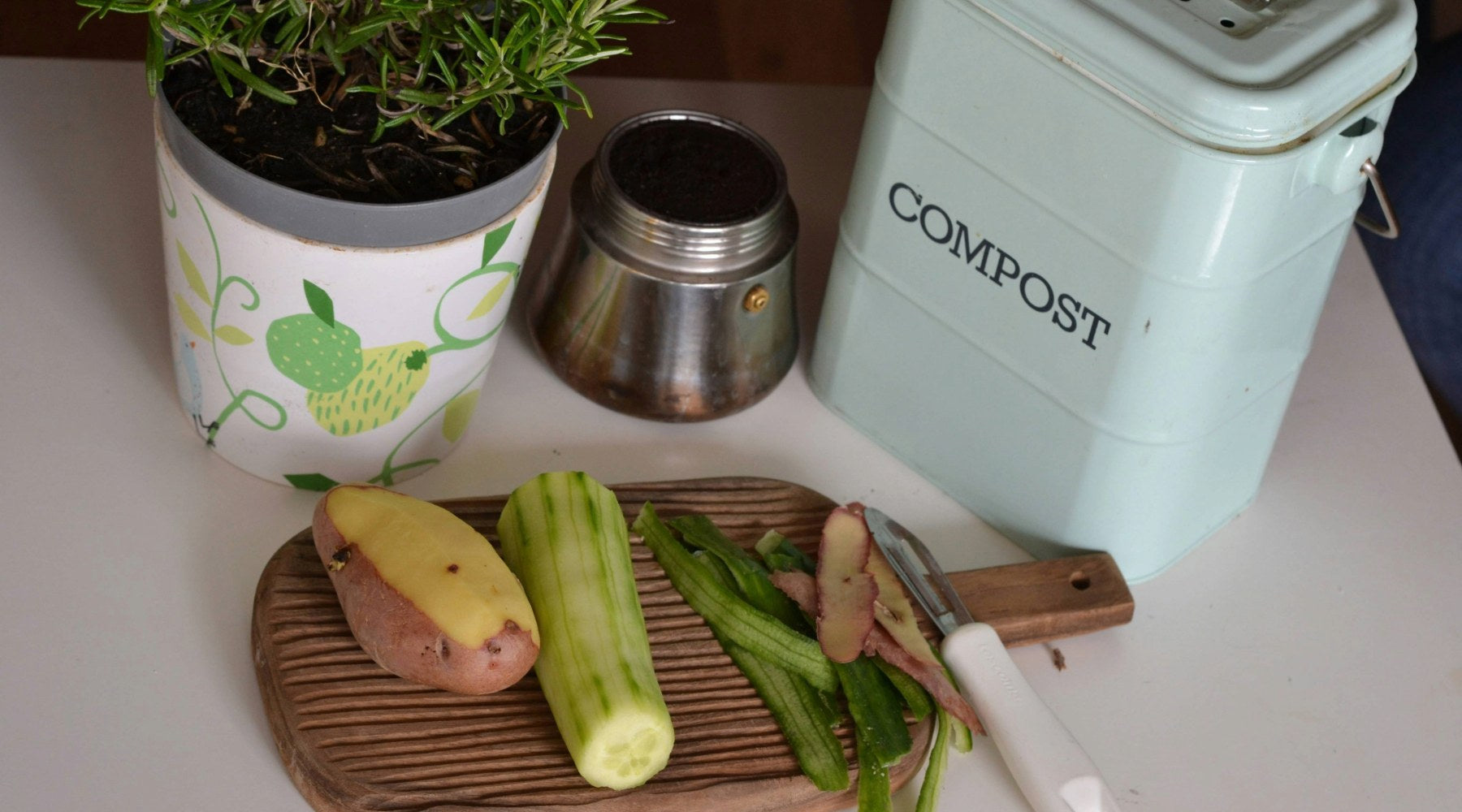How to Compost in an Apartment: Fast and Simple
Composting isn't just for large gardens—apartment dwellers can also reduce waste with indoor composting. This guide covers simple, effective techniques tailored for small spaces, offering practical tips for making a positive environmental impact from the comfort of your home, whether you're new to composting or a seasoned pro.
The Importance of Indoor Composting
Before we look into the specifics of composting in an apartment, let's address the significance of this practice. It may seem unconventional to compost within the confines of a small living space, but it plays a pivotal role in reducing the environmental impact of organic waste.
Consider this: the average US household generates a substantial 650 pounds of organic trash each year, but a significant portion of this waste ends up in landfills. What's surprising is that about 24% of these landfills are filled with organic matter that doesn't decompose effectively due to the lack of aeration.
As a result, this organic waste releases harmful methane gas into the atmosphere, exacerbating climate-related issues. Indoor composting provides apartment dwellers with an opportunity to make a tangible difference in curbing this problem.
Overcoming the Misconception
One common misconception about composting is the fear of foul odors. However, it's crucial to dispel this notion. Compost itself doesn't emit strong or unpleasant odors; unpleasant smells often arise when organic materials mix with non-organic waste, hindering the decomposition process. By managing your compost properly, you can maintain a nearly odorless environment within your apartment.
Bokashi Indoor Composting
Another intriguing option for indoor composting is the bokashi indoor compost bin. This method allows you to compost even meat and dairy products, which can be challenging with other composting techniques.
With a bokashi bin, you add all your compostable materials to the bucket, compress them, and then introduce an activator mix filled with microbes that accelerate the decomposition process.
This method can yield usable compost in just four weeks, which is significantly faster than traditional composting methods. Additionally, you don't need to worry about maintaining a balance of nitrogen and carbon – the activator mix takes care of it for you.
Electronic Composting
For those who prefer a hassle-free and rapid solution, electronic indoor composters offer a convenient alternative. These devices can transform your food scraps into compost overnight. One example is the Lomi, which requires minimal effort and provides instant results. This option is ideal for apartment residents looking for a no-fuss approach to composting.
In addition to food scraps, Lomi can break down Lomi-approved bioplastics, dairy, and meat, which makes it a valuable addition to eco-friendly waste management. This capability allows for more comprehensive disposal of various waste types, reducing landfill contributions.
Trench Method
Trench composting, often dubbed the “lazy gardener’s” composting method, involves simply burying kitchen scraps directly into the soil. This straightforward approach enriches the soil without the need for turning, watering, or dealing with the odors and aesthetics of a traditional compost pile. It’s an efficient way to boost soil health without the extra work or unsightly presence of a compost bin.
While this method may pose some challenges for apartment dwellers, trench composting can be an effective solution if you have access to a suitable outdoor space. Trench composting involves digging a hole in the ground and burying your compostable materials. It's a straightforward, cost-effective, and eco-friendly way to dispose of organic waste.
The primary challenge lies in finding an appropriate place to do it, which can be tricky in an urban environment. However, if you have access to a community garden or a shared outdoor space, trench composting might be a viable option.
Worm Composter Bin
A worm compost bin, also known as a vermicomposter, is a system that uses specific types of worms (commonly red wigglers) to break down organic waste into nutrient-rich compost. The process is called vermicomposting, and it’s an efficient, odor-free method of composting. Worms like to be kept around room temperature, so they’re the perfect indoor pet that happens to like eating your food scraps. Just don’t add dairy, meat, or citrus peels.
How It Works:
The Worms: Red wigglers are the most common worms used because they thrive on decomposing organic matter. These worms consume kitchen scraps and paper products, breaking them down into worm castings, which is the compost.
Bedding: The bin is set up with bedding material such as shredded newspaper, cardboard, or coconut coir. This bedding is the initial environment for the worms and helps maintain moisture.
Adding Waste: Food scraps like vegetable peelings, fruit scraps, and coffee grounds are added to the bin. Meat, dairy, and oily foods are typically avoided because they can attract pests and create bad odors.
Composting Process: The worms eat the organic waste, digest it, and excrete nutrient-rich castings. Over time, the waste material turns into a dark, soil-like substance, rich in nutrients like nitrogen, phosphorus, and potassium.
Harvesting Compost: Once the compost is ready, it can be harvested and used as a natural fertilizer for plants. The worms can remain in the bin to continue composting new waste.
Community Engagement and Curbside Composting
Apartment dwellers have plenty of ways to compost, even in small spaces, and cities are making it easier than ever with curbside composting. Many major cities now offer this service, typically managed by municipal waste organizations like the NYC Department of Sanitation, LA Sanitation, and the San Francisco Department of the Environment.
Curbside composting is as easy as keeping a small container in your freezer for food scraps—this way, you avoid any odors or mess. Once it's full, simply empty it into the compost bin in your building or at the curb outside.
If curbside composting isn’t an option, you can explore community-based alternatives. Many farmers' markets maintain compost bins, and local farmers may welcome your food scraps for their compost piles. Additionally, you might have friends or neighbors with chickens who appreciate food scraps as feed. Community gardens often have composting areas, too.
By engaging in these local composting efforts, you contribute to a shared responsibility for sustainability. Composting is a simple yet impactful step toward zero waste, so why not start today? Whether through curbside collection, community gardens, farmers, or friends, there’s a composting solution that fits perfectly into your apartment lifestyle.
Looking for a Recipe? Search here!

Hey there! So… who even am I, and why should you trust me? I’m Tamara—just a girl trying to live her happiest, healthiest life.
After years of traveling the world as a digital nomad (with everything I owned in two suitcases), I discovered that a sustainable lifestyle gave me so much freedom and joy. I eat better food, I own fewer but better things, and this mindset helped me stay sane—especially after becoming a parent. I love my life and my daughter deeply, and that’s a big part of why I live low waste too: to respect the generations to come and do my part for a better tomorrow.
This little corner of the internet is a reflection of that journey—where I share what’s truly worked for me and what I genuinely use and love in my own life. So glad you're here!




Leave a comment
This site is protected by hCaptcha and the hCaptcha Privacy Policy and Terms of Service apply.